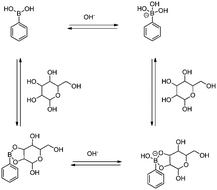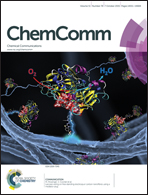Electrochemical sensing using boronic acids
Abstract
Boronic acids can bind with 1,2- or 1,3-diols to form five or six-membered cyclic complexes and also can interact with Lewis bases to generate boronate anions. Therefore, boronic acid functionalised compounds and materials are highly topical and now employed in (i) functional materials, (ii) for attaching/sensing bio-molecules and proteins, and (iii) for microbial electrochemistry as well as being widely developed as chemical sensors and tools in health diagnostics. In this review, we address the recent progress of boronic acid-based electrochemical sensors both in solution processes and surface processes for the detection of biological analytes. This feature article will be of interest to chemists, chemical engineers, biochemists, the sensor community, but also researchers working with protein and microbial systems.


 Please wait while we load your content...
Please wait while we load your content...